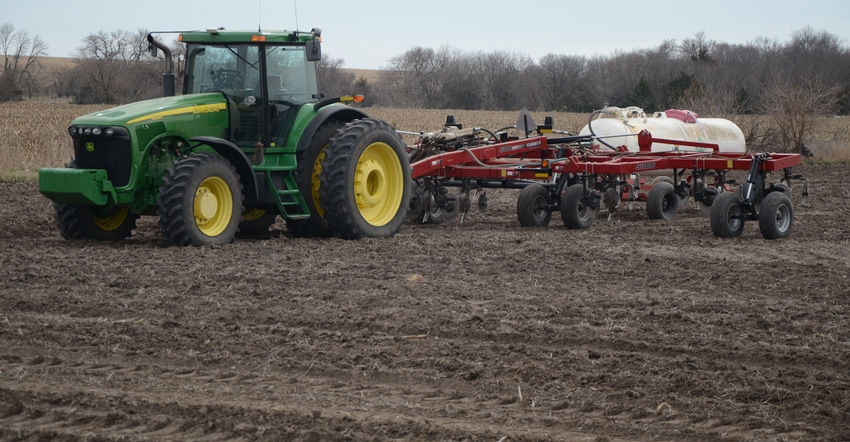March 24, 2017

Note: You can listen to my conversation with Mike Zwingman using the YouTube link embedded in this blog.
During a stretch of unseasonably warm weather in late February and early March, a number of growers decided to the hit the fields to apply anhydrous ammonia — depending on when the nitrogen was applied, it could be 100 days or more before the corn crop uses it.
With that in mind, in the latest Nebraska Notebook we visited with Mike Zwingman, Agronomy R&D manager at Central Valley Ag, to discuss the 4Rs of nitrogen management and nutrient stewardship: the right source, right rate, right time and right placement.
Zwingman notes that individually, those 4Rs are easy to understand. "When you start putting them together, that's when it gets a little more complicated," he says.
It's important to think about them collectively. Take timing, for example.
"One of our biggest influencers on loss is really time between the day you apply and the day the corn plant starts really using the nitrogen, and all the things that can happen in between in the nitrogen cycle," Zwingman says. "The immobilization, the denitrification, the nitrification, the leaching — all of those things that can happen are why timing plays this role."
Placement refers to applying close enough to the roots to achieve adequate uptake to ensure the plant uses nitrogen in the most efficient way, and that changes with timing. Likewise, the right source depends on the timing and placement of the application.
"After all that, we can talk about rate. When we starting talking about rate, we have all these fudge factors or adjustments to your nitrogen rate based on timing," Zwingman says. For example, producers might expect different rates for different timings and placements of application — as well as a different net effect of stand percentages, and original plan and yield goals for that specific location.
"Rate gets really complicated, and it takes a lot of thought process to get what the right rate is," Zwingman adds. "You have to go back to what your yield goals are: being able to work through the algorithms and math in how much nitrogen you're going to need in a rough sense. Then start refining your management style and management criteria, and how the other 3Rs play into that; then you get a final rate number."
You May Also Like




